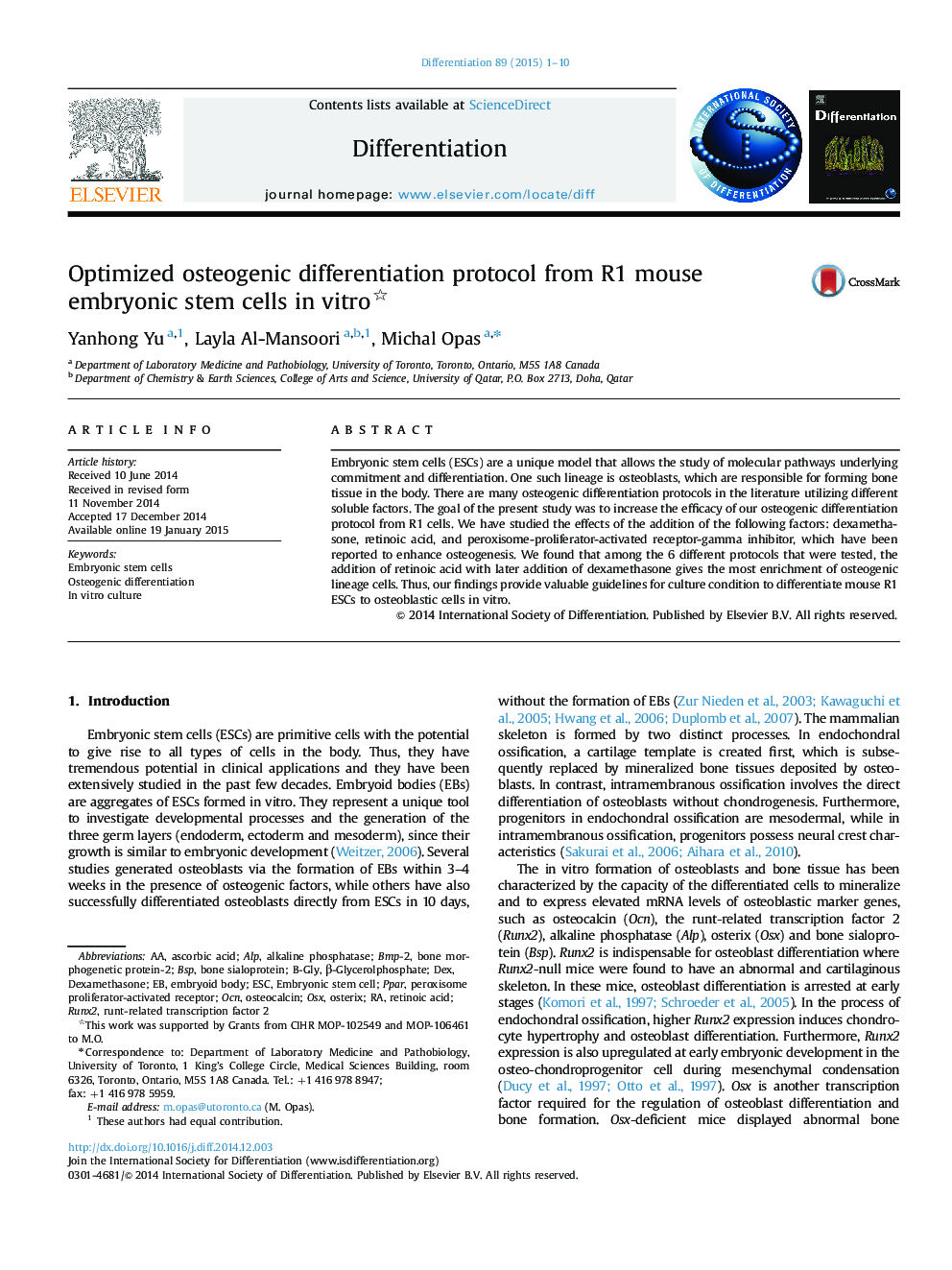| Article ID | Journal | Published Year | Pages | File Type |
|---|---|---|---|---|
| 2119303 | Differentiation | 2015 | 10 Pages |
•We examined osteogenic differentiation from mouse R1 embryonic stem cells.•We compared commonly used osteogenic protocols to determine the most efficacious.•The addition of retinoic acid and dexamethasone (late) gave the highest enrichment.•Our findings provide valuable guidelines to differentiate R1 cells to osteoblasts.
Embryonic stem cells (ESCs) are a unique model that allows the study of molecular pathways underlying commitment and differentiation. One such lineage is osteoblasts, which are responsible for forming bone tissue in the body. There are many osteogenic differentiation protocols in the literature utilizing different soluble factors. The goal of the present study was to increase the efficacy of our osteogenic differentiation protocol from R1 cells. We have studied the effects of the addition of the following factors: dexamethasone, retinoic acid, and peroxisome-proliferator-activated receptor-gamma inhibitor, which have been reported to enhance osteogenesis. We found that among the 6 different protocols that were tested, the addition of retinoic acid with later addition of dexamethasone gives the most enrichment of osteogenic lineage cells. Thus, our findings provide valuable guidelines for culture condition to differentiate mouse R1 ESCs to osteoblastic cells in vitro.
